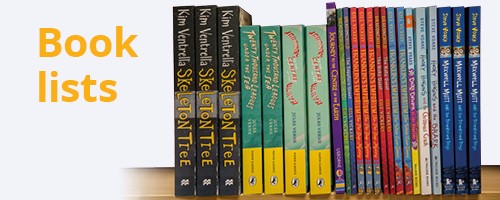Schools please note: due to the summer holidays we will automatically hold all school books and furniture orders due between Wednesday 16 July and Monday 1 September 2025. Delivery will resume from Tuesday 2 September 2025. If your school remains open for deliveries during the summer and you would like to receive your order during this time, please get in touch in advance by calling 0121 666 6646 or emailing hello@peters.co.uk.
For help, advice and telephone ordering call our team on 0121 666 6646
Are you sure you wish to delete this basket?()
This action cannot be undone.
Sorry, something went wrong
Please report the problem here.
The Colour of Hope by Ross MacKenzie

April 28th 2022
For me, the question of where ideas come from is a difficult one to answer. The truth is, I have no clue – and the superstitious part of me doesn’t want to think too much about it for fear of scaring the ideas away!
What I do know is that, for me at least, the really good ideas – the ones that become fully-formed stories – tend to stick around. They stay in my imagination, and grow, and nag away at me, until I have no choice but to tell them. The Colour of Hope was just such an idea.
It began, as many of my books do, with a very clear picture in my head – a world in black and white, and a little girl existing in this monochromatic world in dazzling colour. It was such a striking image that I knew at once there was a story there to tell. But I wasn’t quite sure what that story would be.
And so, I set my mind to other books, to stories that were fully grown and ready to fly out into the world. I always made sure to return every now and again to check on Hope, though, and it seemed that every time I went back to that black and white place, more characters would elbow their way to the front of my imagination, and more pieces of the story would fall into place. Most determined of these characters were Sandy, Hope’s long-suffering, gruff, kind-hearted guardian, and Oliver, Sandy’s eloquent, loyal dog. They turned up together, and I knew right away that their relationship was one that I would enjoy exploring. The banter between them was a joy to write.
I am, for all intents and purposes, Glaswegian. And even though The Colour of Hope takes place in a fictional world, there are strong Glaswegian elements to much of the language and phrasing. The Glasgow dialect is a joy to tinker with. Glaswegians can be bitingly funny and giving Sandy such a voice helped me bring humour and warmth to the book, even in the darkest of places. Sandy quickly became one of my favourite characters, and I hope that comes across for readers as they follow Hope’s journey.
Another choice I made early on was to have Hope grow older as the book progresses.
Each section jumps forward two years, and we get to see Hope coming to terms with the realities of the world around her and grasp the danger of her situation. She is unique, a blaze of colour in a world where colour has been stolen by a maniacal Emperor. A world where even mere mention of colour can have one thrown in prison – or worse. And although Sandy – himself a gifted mage – tries to protect Hope by hiding her powers, word eventually gets out. The result is a growing resistance, galvanised by stories of the “Rainbow Child”, determined to restore the natural way of things.
Will they succeed? And will Hope fulfil her destiny, which pushes her ever closer to a showdown with the Emperor? I hope you enjoy finding out. But beware: there are dangers lurking in the forest, and in the dark, colourless corners of the Dominion. Watch your step, keep your friends close, and remember, even in the darkest moments, that as long as there is Hope, there is a chance.
The Colour of Hope is out now.









